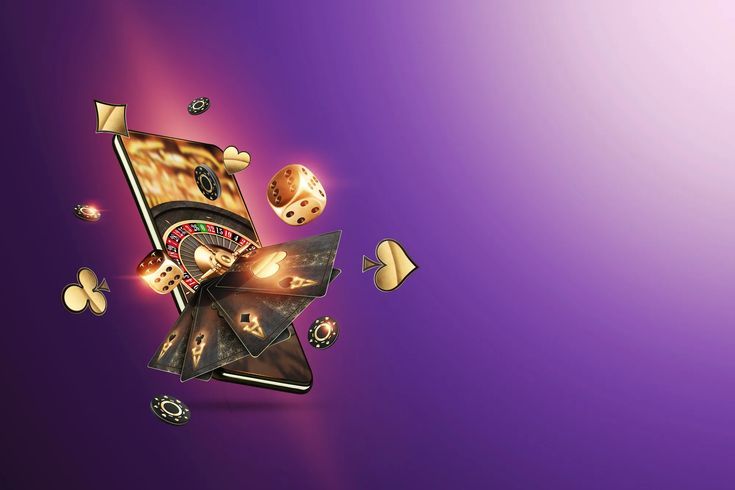The global gaming industry has always thrived on innovation. From the first mechanical slot machines to today’s mobile gaming apps, the journey has been nothing short of revolutionary. Now, as the boundaries between the digital and physical worlds continue to blur, Virtual Reality (VR) and Augmented Reality (AR) are emerging as powerful tools to reshape the way people interact with casinos. In the Australian casino market, where both land-based venues and online platforms enjoy strong popularity, VR and AR could usher in the next major shift in immersive gaming experiences.
This article takes an in-depth look at whether immersive casino gaming, powered by VR and AR, is truly the next big thing for the Australian market. We’ll explore the technology, its current applications, potential benefits, challenges, and what it could mean for both operators and players.
Understanding VR and AR in the Context of Casinos
Virtual Reality (VR): VR technology creates a completely simulated environment where players can interact with games, dealers, and other players using headsets and motion-tracking devices. Imagine walking into a digital Crown Casino in Melbourne without leaving your living room—VR makes that possible.
Augmented Reality (AR): AR overlays digital elements onto the real world, enhancing the user’s environment. For example, with AR-enabled mobile apps or smart glasses, a player could see a poker table projected onto their dining table at home.
Together, these technologies promise a hybrid of entertainment, convenience, and realism that could significantly impact Australia’s casino landscape.
The Current State of the Australian Casino Market
Australia has one of the highest gambling participation rates in the world. According to industry data:
- Australians spend billions annually on casino games, sports betting, and pokies.
- Land-based casinos like Crown Melbourne, The Star Sydney, and Treasury Casino in Brisbane remain central hubs for entertainment.
- Online casinos, though heavily regulated, are gaining momentum thanks to digital convenience.
With a tech-savvy population and a strong appetite for gambling, Australia is primed for innovative shifts in how casino experiences are delivered.
How VR and AR Could Transform Casino Gaming
Enhanced Player Experience
VR and AR can make gaming far more engaging by immersing players in environments that replicate—or even improve upon—real casinos. Players can:
- Walk through virtual casino lobbies.
- Sit at blackjack or poker tables with realistic avatars.
- Interact with AI-powered dealers and other participants.
Social Interaction
Casinos are more than just gambling venues; they’re social spaces. VR and AR can replicate this by enabling players to chat, gesture, and engage with others in real time, enhancing the sense of community.
Accessibility & Convenience
For Australians living outside major cities, visiting a physical casino can be challenging. VR casinos bring the experience directly into their homes, reducing travel while maintaining excitement.
New Revenue Streams
Operators could introduce premium experiences such as VIP rooms, customised gaming environments, or exclusive AR/VR-only tournaments, unlocking new monetisation opportunities.
Global Examples of VR & AR in Casinos
While Australia is still warming up to immersive technologies in gambling, global examples offer a glimpse into what’s possible:
- SlotsMillion VR Casino – A pioneer in virtual slot gaming where players walk through a VR casino floor.
- PokerStars VR – A free-to-play VR poker platform that allows players to experience interactive poker games in immersive environments.
- AR-enhanced pokies – Some developers are experimenting with AR slot machines that project 3D graphics into the player’s space.
These examples suggest a future where Australia could integrate similar innovations, customised to local preferences and regulations.
Challenges for VR & AR Casino Adoption in Australia
Regulatory Hurdles
Australia’s gambling laws are strict, especially for online casinos. Regulators would need to carefully assess VR and AR platforms to ensure they comply with the Interactive Gambling Act.
Cost of Technology
High-quality VR headsets and AR-enabled devices remain expensive. Widespread adoption will depend on lowering entry costs for players.
Player Adaptation
While younger demographics may embrace immersive technology, older players—who form a significant portion of Australia’s gambling base—may resist the shift.
Responsible Gambling Concerns
Immersive experiences could potentially make gambling more addictive. Enhanced safeguards, self-exclusion features, and player awareness campaigns will be crucial.
Opportunities for the Australian Casino Market
Despite challenges, the opportunities are vast:
- Tourism Boost: Australian casinos could use VR to give international visitors a preview of their venues, attracting more tourists.
- Hybrid Experiences: Casinos might blend physical and digital elements, such as AR-enhanced poker tournaments.
- E-Sports and Gamification: VR casinos could merge with the booming e-sports scene, appealing to younger audiences who value interactive entertainment.
- Customised Marketing: Using AR, casinos could offer personalized promotions visible through apps or wearables when players are near venues.
The Future Outlook: Will VR & AR Become Mainstream in Australian Casinos?
The trajectory looks promising, but widespread adoption may still be a few years away. Here’s why:
- Technology is advancing rapidly, with headsets becoming more affordable and accessible.
- Younger, tech-savvy generations are increasingly drawn to immersive experiences.
- Operators are actively exploring digital innovations to stay competitive.
However, the pace of adoption will largely depend on regulatory clarity, affordability of devices, and effective responsible gambling strategies.
Conclusion
VR and AR are poised to revolutionise the casino experience in Australia by delivering immersive, social, and accessible gaming opportunities. While challenges such as cost, regulation, and player adaptation remain, the potential rewards are enormous for both operators and players. If implemented responsibly, immersive casino gaming could indeed be the next big thing in the Australian gambling landscape.
As with every innovation, the winners will be those who embrace change early, experiment wisely, and put player well-being at the centre of their strategies. For the Australian casino market, the question is not if VR and AR will play a role, but when they will reshape the future of gaming.
